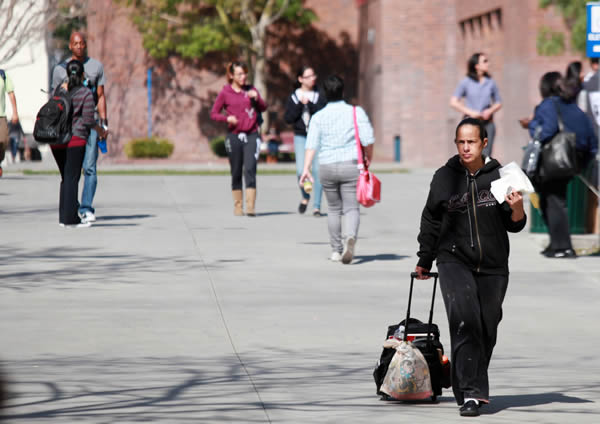President Obama is busy crossing the country and appealing to young Americans on the issue of student loans. He’s warning them of the possibility of increased interest rates this summer, which are set to double. Of course, there’s much more to the story than the president lets on. Douglas Holtz-Eakin explains on National Review’s “The Corner”:
[The interest rate increase] sounds serious. After all, there are 39 million Americans with student loans owing over a trillion dollars of debt, and interest rates doubling from 3.4 percent to 6.8 percent would be a huge hit at a time when households are already struggling.
Serious, except that the president’s plan would apply only to those 23 million loans being borrowed directly from the federal government.
Except that not all of those would benefit; it would apply only to the 9.5 million loans being borrowed through the so-called subsidized Stafford loans.
Except the lower rate would apply only to new borrowers who apply this year
Except that no payments are made until after graduation, so it would not help anyone for several years.
Except that it would lower monthly payments by an average of only $7.
None of this is to say that the federal government should be doing more to bail out students. It shouldn’t. The point though is that the president is turning the student loan problem into a political issue, and he’s hiding the fact that federal overreach into the industry is largely to blame for today’s problems. Heritage’s Lindsey Burke explains:
The Obama Administration’s overreach into the student loan industry has been wide-sweeping. In what The Wall Street Journal deemed “that other government takeover,” a provision buried deep in Obamacare effectively nationalized the student loan industry by ending government subsidies to private lenders and putting the federal government in charge of originating and servicing federally backed student loans.
The Obamacare provision came in addition to the Administration’s decision in 2011—made through executive order—to forgive student loan debt after 20 years. And it comes in addition to the Administration’s gainful employment regulations restricting access to student loans for students attending for-profit institutions.
But the current debate’s origins are in separate legislation passed in 2007 whereby the federal government set interest rates on student loans artificially low, cutting the rates in half temporarily for four years. Now that the interest rates are set to increase, President Obama is pressing Congress to keep rates low.
Burke says that part of the problem is that under the current system, virtually anyone is eligible for a student loan, regardless of credit history or repayment potential. And the taxpayers are on the hook for the costs.
Here’s another fact to keep in mind. The cost of attending college has increased 439 percent since 1982 — even with federal involvement in student loans. Burke suggests that to drive down the cost of college, America should shift from debt-based to savings-based college financing, limiting access to federal student loans to four years of undergraduate work, and allowing the free market to work (as online learning grows and expands) to reduce college costs.
